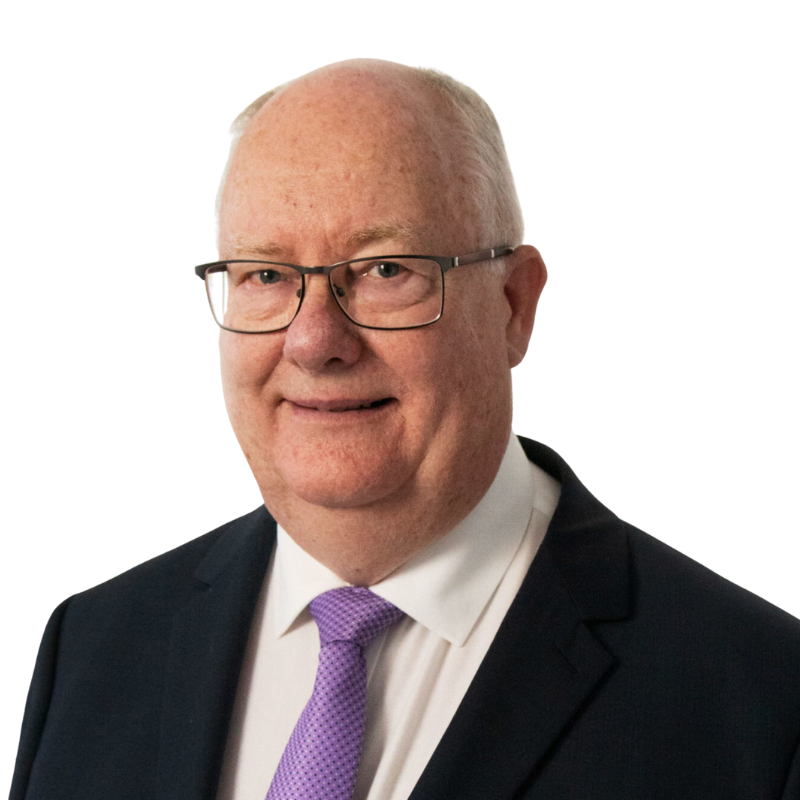Some key challenges include demotivated employees, burnout and more
Interviewees: Stephen Bell, Costa Brehas, Steven Booker, Louise Groves, and John Boardman
Most organisations are gearing up for office Christmas parties and are mentally preparing to wind down for the holidays. Yet, a thought continues to persist: Will we be able to churn out solutions to some of the biggest HR challenges in the new year?
End-of-the-year fatigue is setting in for HR managers, leaders, and employees. And understandably so. Given significant legislative changes that have taken place in the employment law space and a looming economic downturn, 2023 has not been easy on most workers.
This is even more apparent in the case of the younger generation or the ‘Gen Zers’. Managers, as reported by Business Insider, label them as the ‘most challenging’ generation to manage. In response to this, Gen Zers emphasise the need for a good work/life balance and claim to be “too burned out to care” about work.
While poor work-life balance seems to be causing turbulence within workplace cultures, anecdotally, there appear to be other factors contributing to this state of affairs which are worth exploring. On a hunt to seek insights, we turned to five of our in-house HR specialists to share their views on the biggest challenges in the employment law landscape, and what can be done to get out of this rut in 2024.
As this is our last article of 2023, we are releasing one expert’s opinion each day this week – starting Monday, 27 November. Keep your eyes peeled to our end-of-the-year expert series or subscribe to our email newsletter to receive it in your inbox.
WORKPLACE CHALLENGE 1 OF 5
The need to rewrite the story about engagement – Stephen Bell, Managing Director
“I think 2024 is going to be a very interesting year in employee relations, especially in the context of upcoming agreements”, says Bell.
Yet, a potential complexity for managers is re-engaging their employees.
The younger workforce were encouraged to work remotely early in their careers due to COVID. Although the inclination towards remote work continues to exist, Bell notes that, “these employees missed out on the opportunity to engage with their co-workers, understand job expectations, and learn about acceptable workplace standards,” says Bell.
Something as simple yet fundamental as a proper face-to-face induction program was inaccessible during this period.
To this, Bell emphasises that “the first four-weeks of experience that an employee receives plays a pivotal role in helping them understand their employer’s expectations.”
“Managers should not just steal the concept that this is a paradise to work in but reiterate the seriousness around achievement in the workplace”, he adds.
But in expecting and advocating for a high level of achievement and engagement, a manager needs to match it with a high level of care, “because we’re still dealing with generations of employees where the notion that ‘my manager cares about me and what happens to my career’ is seen as an extraordinarily important thing,” Bell clarifies.
Therefore it’s so crucial for employers to rethink their engagement strategies, particularly if there is an expectation for the employees to return-to-the-offices, to “continually ask themselves ‘what does a caring employer look like’.”
Narrate a good re-engagement story
“In many ways, a manager needs to kind of teach young people what standards look like and also what engagement looks like,” says Bell.
A thorough review of the organisation’s engagement policies and strategies is essential to guide the new workforce, albeit the challenges it poses.
Therefore, Bell advises “organisations to re-design workplace cultures that spark a level of excitement about going to work, catching up with fellow employees, and feeling motivated to climb the corporate ladder.”
“Only an organisation that bestows care for their people, clearly communicates their policies around hybrid working and flexible work arrangements and takes an active part in the development of their people can start to craft their engagement story,” reiterates Bell.
WORKPLACE CHALLENGE 2 OF 5
Emerging trend of demotivated employees – Costa Brehas, Senior Workplace Relations Adviser

Costa Brehas, Senior Workplace Relations Adviser
Costa Brehas, in alignment with Stephen Bell, acknowledges the prevalence of a disengaged group of young employees. However, Brehas takes a slight detour on attributing the reasons for the erosion of employee motivation.
Underlying reasons, according to Brehas, include a strong sense of resentment that many young workers feel towards controlling workplaces, focused on growth and profits at all costs and an inconsistency with their personal values and principles of social justice.
“Although receiving things such as good remuneration and other perks like bonuses and free parking are all relevant, they don’t constitute the primary driver for engagement,” says Brehas.
“As far as I’m concerned, we need a new employer mindset, whereby there’s an employee-centric focus in 2024.”
In Brehas’ view, if organisations consider employees as the tools by which a business functions, failing to properly look after those ‘tools’ can ultimately result in a failed business.
A happy workforce translates into profits
“I think the first step is to consult with employees individually, and as a group about what they want in order to be content in the workplace,” says Brehas.
“I think employers should also regularly be in touch with their employees to find out what’s working and what’s not.”
Additionally, Brehas places emphasis on establishing a safe and healthy working environment, and prioritising wellness in the workplace. This includes undertaking a genuine measure to ensure that there is no bullying, harassment, and discrimination in a working environment.
Doing these things builds a sense of trust, and cultivates a relationship where employees know that their employer is committed to doing the right thing, says Brehas.
Another channel to motivate young employees is ensuring they can see a future within their organisation.
“I think it’s important for employers to provide suitable training and development to improve employee skills, paving the way for them to be promoted, and thereby increasing their earnings,” says Brehas.
Having a multi-skilled workforce is another aspect of ensuring the workforce is not feeling burnt out and compelled to be always present at work. “For example, if an employee is sick, another employee upskilled in that particular employee’s area of business can take over some of the more pressing aspects of their workload during unexpected absences.”
“This will ensure a seamless transition of work and the sick employee does not find themselves with a whole pile of work on their return to the office,” says Brehas.
He also clarifies that a multi-skilled employee needs to be properly compensated, recognising the additional responsibilities they shoulder outside their job description.
WORKPLACE CHALLENGE 3 OF 5
Psychosocial risks – we know it but do not know what to do about it – Steven Booker, Consulting Psychologist
In July 2023, the Safe Work Australia’s (SWA) Managing Psychosocial Hazards at Work code of practice set a benchmark for organisations and managers on how to comply with their obligations to eliminate or control psychosocial risks. Although the Code is not legally binding across every state and territory, it has become a reference point for most organisations around facilitating a workplace environment that puts psychological safety first.
Most Australian workers in HR have a strong grasp over these laws, however “the real challenge is practically meeting those obligations in this area,” says Booker.
“For example, we have got a risk of employees not having enough control at work [job autonomy], which is one of the things that the new laws emphasise. So, managers need to reflect on ‘What does it mean in the context of our business? ‘How are employees relating to the business processes or equipment or machines or systems that they use?’ and ‘Is it more around, feeling that they are not being listened to and consulted in relation to major decisions?’.”
“I believe organisations need to put in the work to identify those risks, measure them, and address them appropriately,” says Booker.
With large-scale organisations, there is often the presence of a dedicated team of health and safety officers who have a pretty good hand at tracking and storing their employee data about physical safety risks. Yet, any potential reporting around psychosocial risks is not carried out.
Booker believes it is “harder to capture and measure data in relation to some of these psychosocial risks, because these risks are harder to understand, see, and measure.”
In his years of experience, Booker has noticed a trend where most organisations develop their own survey questions and highlights the problem with this methodology of understanding psychosocial risks and safety.
“When you write your own survey and survey questions, you do not always know whether the question you are asking is what it is measuring. And you also do not know whether you have got more than one question that’s kind of measuring the same thing, or some questions measuring two things,” says Booker.
“So, if you get a high score on it, you do not know which of those things is causing the high score. I think a tip really is, you know, 2024, might be the year where we say, let us bring the same level of rigour and science to our psychosocial risks that we do have around our physical risks,” he adds.
The Copenhagen Psychosocial questionnaire (COPSOQ)
Developing questionnaires to microscopically analyse employee behaviours, moods and their engagement levels can be expensive and time consuming, considering the complexity of the process, says Booker.
At iHR Australia, we were swift enough to identify an existing questionnaire that has been scientifically validated and offers a multi-dimensional view of the workplaces’ psychosocial risks.
“It’s called the Copenhagen Psychosocial Risk Questionnaire, which does two really important things – breaks down the responses into subcategories and measures wellbeing outcomes,” adds Booker.
For example, one of the psychosocial risks identified is unreasonable work demands, which puts employees consistently under too much pressure to meet impractical deadlines. “It’s reasonable for all of us to have a bit of stretch in our job from time to time, but we’re talking about consistently overloaded to the point where things can never get done and targets feel unachievable,” clarifies Booker.
This tool, designed to be an anonymous survey platform, has a unique feature where it can break down a ‘risk’ into sub elements.
“If we consider an employee to be experiencing extreme workload, the questionnaire narrows it down to whether the work is fast paced, intellectually demanding or emotionally demanding, which basically gives you some nice granularity around these issues,” he adds.
Furthermore, as a member of an organisation filled with HR and workplace relations experts, Booker has a greater understanding of the potential detrimental effects of unaddressed psychosocial risks within workplace cultures.
This is precisely why “we’ve been thinking proactively about how to help clients respond to these challenges and have made slight adjustments to the COPSOQ free questionnaire to help organisations in conducting a gap analysis between the employee and the manager’s perceptions of risks and health outcomes.”
We are thrilled to be launching this tool on our website shortly.
The tool can really shape the way organisations deal with the identification, control, and monitoring of psychosocial risks, says Booker.
WORKPLACE CHALLENGE 4 OF 5
Burnout no longer needs to be an inevitable slide – Louise Groves, HR professional and Coach
“Many people are exhausted, and I think it’s a post COVID thing”, says Louise Groves. However, what intrigues Groves is the paradox that, despite there being a heightened desire for interaction, there seems to be a bit of decline of “good manners and civility towards each other” over the past two years.
“And I think this type of behaviour becomes evident due to high levels of burnout,” she adds.
In Groves’ experience of working with numerous organisations, people in leadership roles are expected to model good behaviour, which means self-care often gets pushed to the back burner.
“What I’m seeing, and hearing is that we need the managers and the leaders to step up. Now, that is a very broad statement. And I think whenever a manager hears that they kind of go ‘oh, no, not another thing’.”
“And some of that is coming out of fear,” she adds.
Groves goes on to elaborate on how managers and leaders are getting fearful about what they are expected to do. And this stems from the notion that they need to be “coming up with solutions all the time.”
A similar thing can be said about people in HR roles.
Groves says, “they’ve [HR] gone through organising everyone through COVID, and often been really nurturing and supportive.”
“They’re the ones who are at the brink of burnout.”
Therefore, Groves emphasises on the need to be open and realise that “burnout need not be an inevitable slide, and can actually be a place of growth,” she adds.
Role modelling behaviours that prioritise self-care
An organisation’s acceptable and normalised standards are often set by its leaders.
“So that trickles down in terms of making sure that any kind of inappropriate behaviour doesn’t develop, spread or become acceptable as there is a strong correlation between a toxic workplace and burnout,” says Groves.
As a consultant and coach, Groves believes that organisations should look after their leaders and HR teams. But this requires “some work and goes beyond just going on a holiday.”
Groves suggests training in the form of career counselling, coaching around how to handle change management, and ensuring leaders receive mentoring on self-reflection to cure burn out in 2024.
Here are a few other key challenges that Groves believes will be the “big thing in 2024”:
- Looking at systemic change and continuing to put in the work to create inclusive workplace environments
- Embracing neurodiversity in the workplace
- The need to invest in coaching and supporting of new people in the workplace
- Re-engaging and retaining the older workers
WORKPLACE CHALLENGE 5 OF 5
Growing complexity in determining unreasonable behaviour – John Boardman, Director Workplace Relations
The year 2024 will see employers and investigators struggling to tread the fine line between “running a viable business in a tough economic environment and the risk of very significant legal and financial penalties if they do not take all reasonable steps to prevent psychological injury,” says John Boardman.
One of the main reasons for an emerging trend of behaviour complaints in the workplace is remote work, following a post-COVID era.
During COVID, a significant number of employees worked from the comfort of their homes during the lockdown period, which led to a drastic shift in the way work was perceived. “This impacted human interactions, created tensions, and increased miscommunication.”
“Additionally, whether an employee was ‘at work’ or not became blurred,” he adds.
Boardman notes the substantial role played by smartphones, particularly during the pandemic, when employees responded to work emails and messages outside of their normal working hours.
This heightened the level of workplace-stress and pressures employees experienced, gradually transforming into workplace frustrations.
“Even the nicest employee could snap back,” Boardman says.
Some other factors like poor job design, inflexible workload and mental health struggles are other key factors, according to Boardman, which contribute to an employee feeling like “they cannot cope or are otherwise feeling ‘unsupported’.”
“Another impact still being felt from COVID is the chronic shortages of staff in many industries such as hospitality, health services, emergency services, childcare/teaching, and age care just to mention a few.”
Boardman also notes that staff shortages amplify the workload for existing employees, creating friction within co-workers, which leads to disrespectful and potentially aggressive behaviours.
Employer’s duty to provide a safe work environment
Boardman asserts that proper training at a board, management and employee level can establish a standard for appropriate and respectful workplace behaviours.
Additionally, he advises leaders to be good at, “communicating clearly from the get-go, redesigning jobs to be more fulfilling, and being proactive with the identification of ‘unacceptable’ behaviours to ensure any forms of psychological injury is prevented.
—
Thanks for being a part of our expert article series this year
We’d love to know so our experts can discuss it in 2024!
What workplace topics matter to you?
—
Where to from here?
With 2024 fast approaching, many organisations are already reviewing their learning and development budget to enhance their skillset for the rapidly changing nature of work.
We can help you review your organisation’s engagement strategies.
We also understand that the new year brings immense joy but simultaneously adds pressure for people in HR who have to present exciting learning opportunities.
So we have a few training delivery options that will be suitable to any workplace:
Recent articles
![Lee Witherden v DP World Sydney Limited [2025] FWC 294 (2) Workplace policies](https://ihraustralia.com/wp-content/uploads/bb-plugin/cache/Lee-Witherden-v-DP-World-Sydney-Limited-2025-FWC-294-2-1024x539-landscape-dc731230e07743843bfa2c830cc42561-.png)
Smart Workplace Policies, Stronger Cultures: Compliance Made Clear








